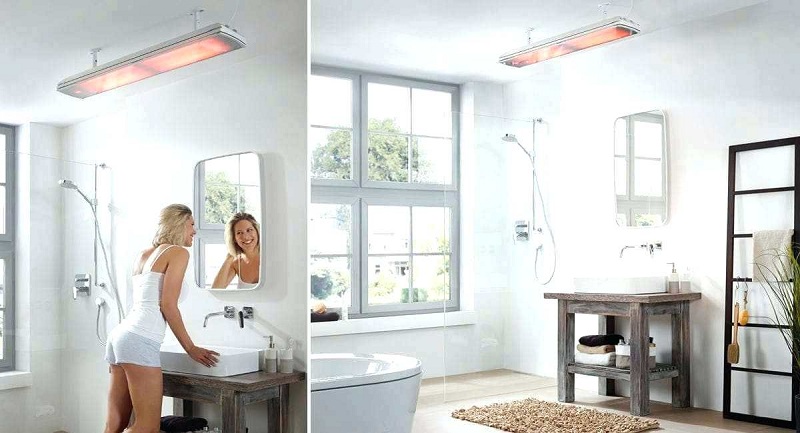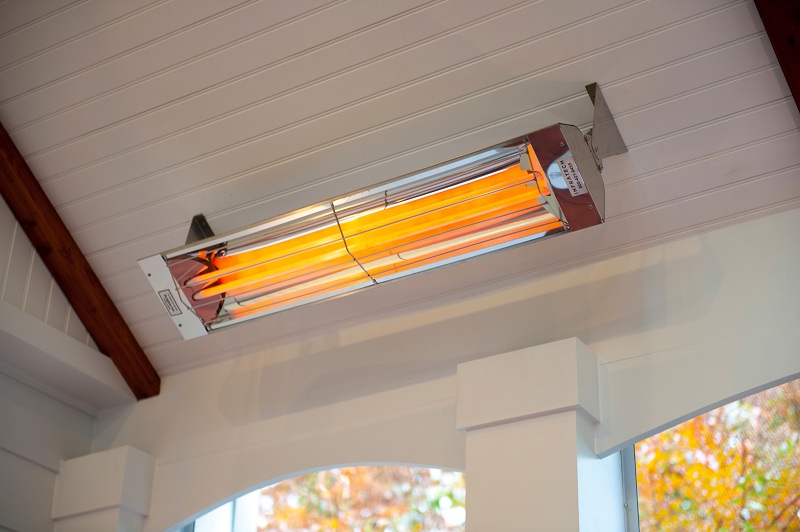
Before choosing a ceiling infrared heater to a potential client, it is imperative to get acquainted with the principle of infrared heating and to study the characteristics of the devices that make this principle into practice. Only then it will be possible to proceed to the consideration of different models of heating devices and deal in more detail with the highlights of each of them.
With a careful study of heating devices, you can be convinced that the principle of operation of IR heaters is based on the generation of heat waves of a certain length by the irradiator plate, which are generated by passing a current of a given magnitude and frequency through it. In the upcoming sections of our article, we will try to familiarize you with the following questions:
- Features infrared heating.
- The advantages of using infrared heaters.
- Types of commercially available heaters, taking into account the main working features of their emitters.

Features and benefits of ceiling infrared heater
The highlight of the use of IR irradiators as heat sources is the method of heating with their help the surrounding air space.
Note! In accordance with this method of action of direct radiation of the device, surfaces, and objects located nearby, including elements of the decor of the room (walls, partitions, furniture, etc.), are primarily exposed to heat. The heat concentrated in these objects, with time is transferred to the air in the room and it heats up quickly enough.
The advantages of heaters of the class we are considering include such unique features as:
- universality, i.e. the ability to work in virtually arbitrary types of premises;
- low energy intensity;
- a possibility of localization of heating areas;
- the high efficiency of the device, reaching in some cases 90%;
- the impossibility of overdrying the air in the room.
To emphasize that the irradiating effect of these devices is similar to the action of sunlight on a person and does not have the ability to cause him any harm.
Varieties of ceiling heaters
Most models of ceiling-type heaters are available in two versions, differing in the type of heating and radiation element used (long-wave or short-wave). That’s why before going to the store, be sure to decide what kind of irradiator model you need.

In the long-wave heating devices, classic electric heating elements are used as a heating element. Devices of this class have a high level of fire safety because the heating temperature of their work item does not exceed 230 degrees. The installation site of such devices is selected based on a distance of not less than 50 cm from the distance from the heated surfaces.
Shortwave heaters are equipped with special heating elements, made in the form of a spiral, placed in a glass tube. The heating temperature of such a helix can be about 600 degrees so that the removal of the radiating element from the heated planes should be large (not less than 3 meters).
To refer to another type of ceiling feed, the so-called film heater, made on the basis of the foil placed in the heating element. The advantages of film-type devices include the following excellent properties:
- heating devices of this type can be placed under the ceiling trim;
- Efficiency in order for the device to reach values of the order of 95%, so that it is considered the most economical heater in the group of devices of the class under consideration (when used for heating a room of 200 m 2, a little more than 4 kW is spent);
- The design of the film heater allows the use of remote control, which significantly increases the comfort of working with it.
The high power of the heaters of the types we have considered may be about 1500 watts. If it is necessary to warm up large spaces, you will need to use a pair of heating modules, which should be placed evenly over the whole area of the room.
- When choosing a heater of any type that is suitable for you, you should not forget about the following:
- the ceiling is considered the best place to house a heater;
- lower placement of the heating device significantly reduces its efficiency
- applications;
- the performance of devices of this class largely depends on the voltage in the local power supply network, which must be within the range from 215 to 235 volts;
- for large voltage drops, you will need to apply a voltage stabilizer.





